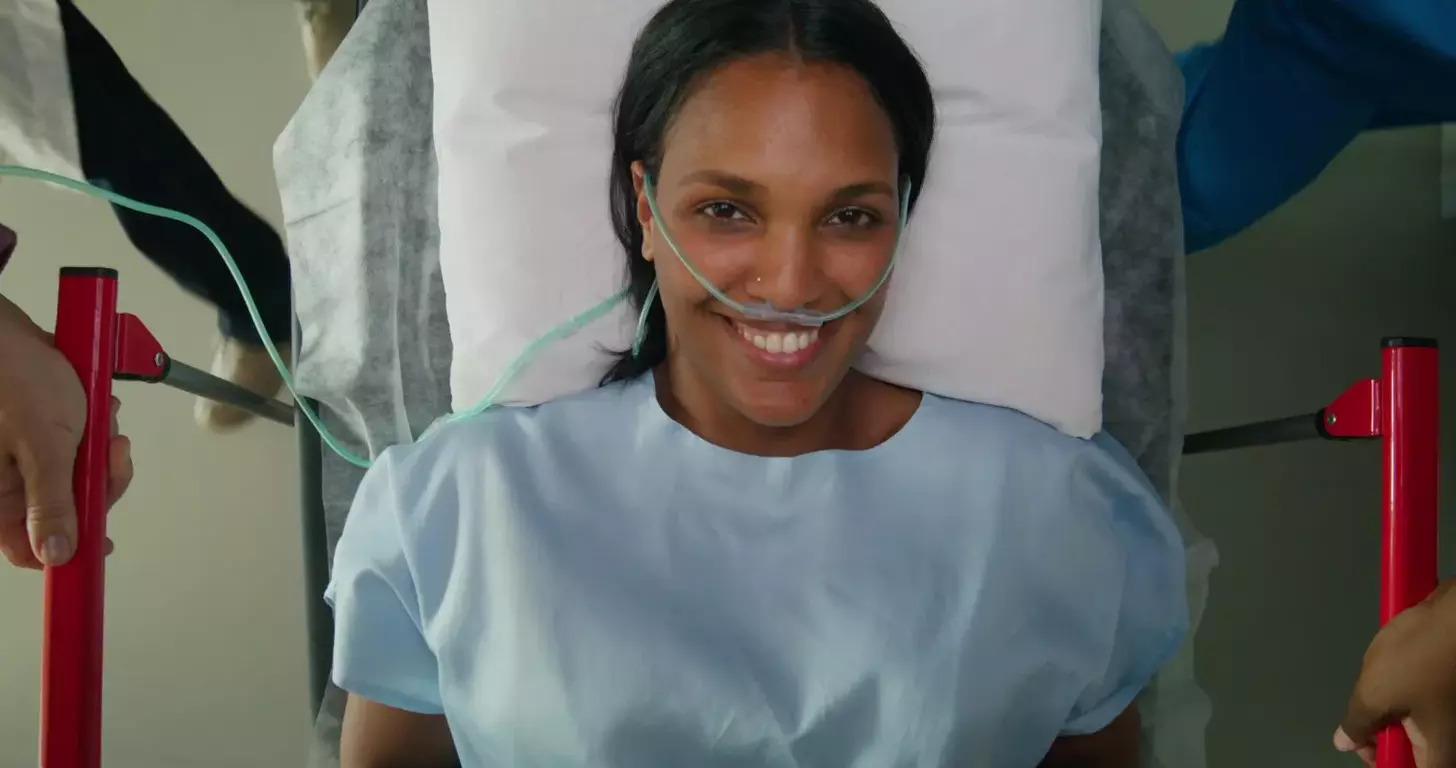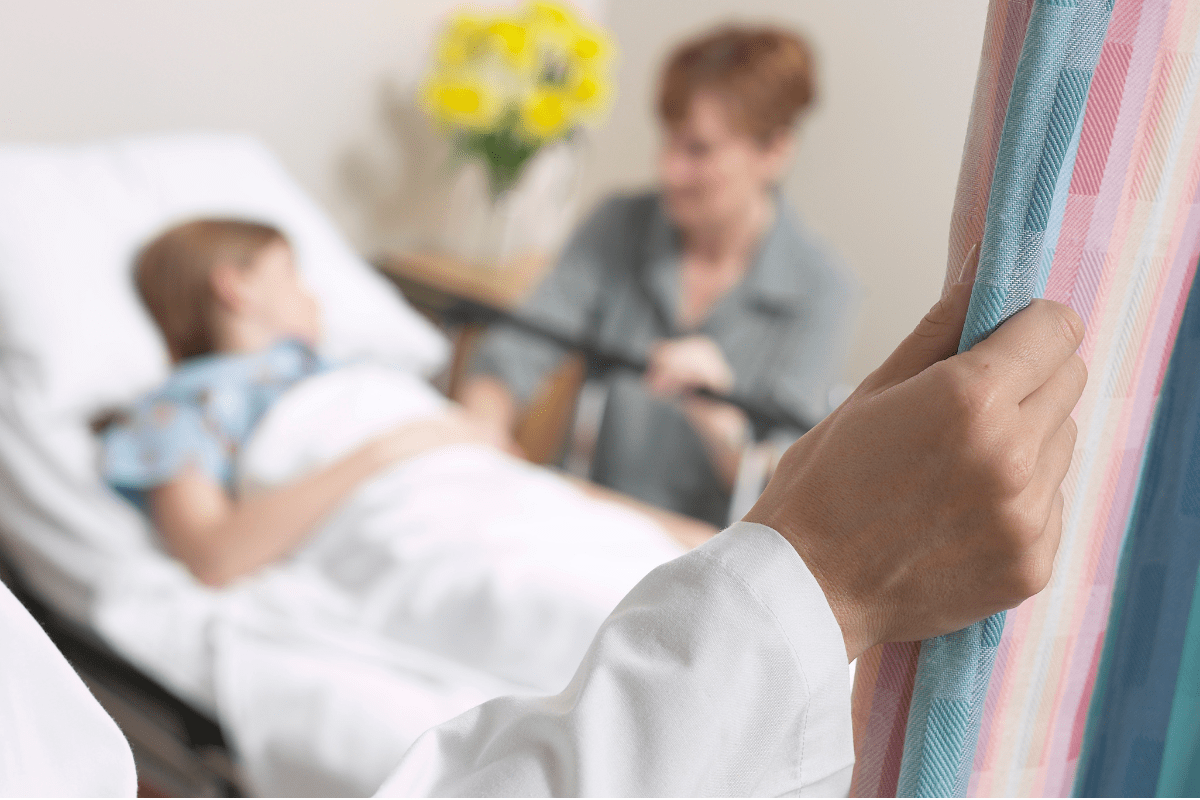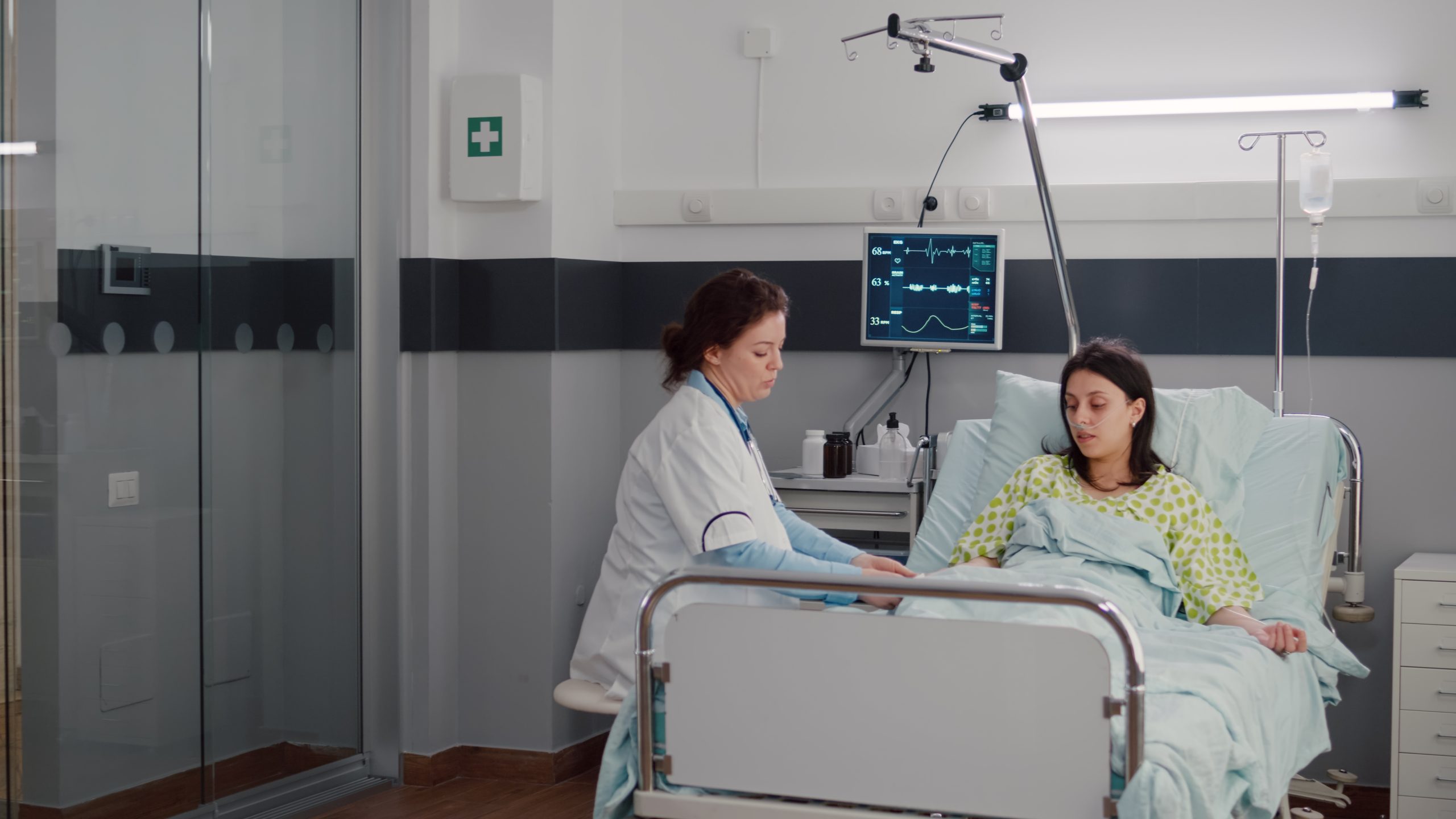Last Updated on November 27, 2025 by Bilal Hasdemir

Finishing your last chemotherapy treatment is a big deal. It’s the start of a new chapter in your fight against cancer. At Liv Hospital, we know this time is full of ups and downs. We’re here to help, with both medical know-how and caring support.
How long it takes to get better after chemotherapy varies from person to person. Studies show that everyone’s journey is different. Knowing what to expect can make you feel more in control. Let’s explore seven key things you might face during your recovery and after.
Key Takeaways
- Understanding the recovery process after chemotherapy
- What to expect during the recovery period
- Tips for managing physical and emotional challenges
- The importance of follow-up care
- Returning to daily life after treatment
The Emotional Journey After Your Last Chemotherapy Session
Finishing chemotherapy is a big deal, but it comes with mixed feelings. Patients might feel relieved but also worried about what’s next. Everyone’s journey is different, shaped by their treatment and outlook on life after cancer.
Mixed Feelings: Relief, Anxiety, and Hope
Ending chemotherapy feels like a big win. Patients feel they’ve beaten a tough challenge. Yet, they worry about the future. Will cancer come back? How will they handle life without their treatment team?
It’s normal to feel this way. We know patients need help and support. Studies show that good friends and a positive attitude help cancer survivors feel better.
| Emotion | Common Feelings | Support Strategies |
|---|---|---|
| Relief | Accomplishment, freedom from treatment | Celebrating milestones, sharing feelings with loved ones |
| Anxiety | Fear of recurrence, uncertainty about the future | Mindfulness practices, seeking support from cancer communities |
| Hope | Renewed purpose, looking forward to the future | Setting new goals, engaging in activities that bring joy |
The Transition from Patient to Survivor
Finishing chemotherapy marks a new start. Patients start a new chapter, moving from patient to survivor. This change can be tough, as they adjust to a new identity and deal with treatment’s emotional effects.
This transition isn’t easy. It needs patience, understanding, and support. By facing the challenges and opportunities of survivorship, people can start rebuilding their lives and find new purpose.
How to Process This Significant Milestone
Dealing with the end of chemotherapy is more than just finishing treatment. It’s about looking at the emotional, physical, and mental sides of the cancer journey.
Reflection is key. Taking time to think about the journey, the challenges, and lessons learned helps integrate cancer into one’s life story. Also, seeking support from family, groups, or mental health experts offers a safe place to talk about feelings and find ways to cope.
By facing these emotions, cancer survivors can move forward with hope and purpose.
Understanding Your Post-Chemotherapy Recovery Timeline
Knowing how long it takes to recover from chemotherapy is key for patients. Everyone’s recovery is different. It depends on many factors.
A common rule is the “Two Month Rule.” It says for every month of chemo, you might need two months to get better. So, if you had three months of chemo, you might need six months to fully recover.
The “Two Month Rule”: Recovery Time Estimation
The “Two Month Rule” gives a rough idea of what to expect. But, it’s important to remember that everyone recovers differently.
Here are some things to keep in mind about the “Two Month Rule”:
- It’s based on the average recovery time for patients undergoing chemotherapy.
- The rule doesn’t account for individual differences in health, age, or the specific type of chemotherapy received.
- Recovery is not linear; it’s a process with ups and downs.
Individual Factors That Affect Recovery Speed
Many factors can affect how fast and well you recover. These include:
- Overall Health: Patients with pre-existing health conditions or those who are older may require more time to recover.
- Type of Chemotherapy: Different chemotherapy regimens have varying side effects and recovery requirements.
- Resilience and Mental Health: A patient’s mental and emotional state can impact their physical recovery.
- Lifestyle Factors: Nutrition, exercise, and social support play a big role in recovery.
Setting Realistic Expectations for Healing
It’s important to have realistic expectations for recovery. Recovery is a slow process. It’s normal to feel better and worse at different times.
To set realistic expectations, patients should:
- Discuss their recovery timeline with their healthcare provider.
- Understand that some side effects may last longer than others.
- Focus on gradual improvements, not expecting to get better right away.
By understanding these aspects of post-chemotherapy recovery, patients can prepare better. This helps them heal more positively and resiliently.
Physical Healing After Last Chemotherapy Treatment
After your last chemotherapy treatment, your body starts to heal in many ways. Physical healing is a big part of recovery. It involves changes in your body that affect your overall health. Knowing about these changes and how to help your body heal is key for a smooth recovery.
Hair, Skin, and Nail Regrowth Patterns
One of the first things you might notice is hair, skin, and nail regrowth. Hair regrowth starts a few months after treatment ends. It might take up to a year for your hair to look like it did before treatment.
Skin and nail regrowth also take time. Your skin might get dry or sensitive, and your nails could become brittle. Using gentle skin and nail care products can help manage these changes.
- Use mild shampoos and conditioners for your hair.
- Moisturize your skin often to fight dryness.
- Keep your nails short and use strengthening products.
Healing of Surgical Sites and Port Removal
If you had surgery or a port insertion, healing these areas is important. Surgical site healing can take weeks to months. It depends on the surgery and your health.
Removing a port is a big step in recovery. Follow your doctor’s instructions for care after removal to avoid problems.
Watch these areas for signs of infection like redness or swelling. If you notice anything, tell your healthcare team right away.
Weight and Appetite Normalization
Chemotherapy can change your weight and appetite. Weight normalization takes time and involves eating well and staying active. Talk to a nutritionist to create a meal plan that helps you recover.
For more on diet and exercise during recovery, check out our resource on cancer treatment options. It has tips on nutrition and exercise.
Getting your appetite back and stabilizing your weight are signs of recovery. Listen to your body and adjust your diet and exercise as needed.
- Eat small meals often to manage hunger.
- Drink lots of water to stay hydrated.
- Slowly increase your activity to boost energy.
Managing Persistent Fatigue: The Most Common Post-Chemo Challenge
Recovering from chemotherapy often means dealing with lasting fatigue. This affects both body and mind. Fatigue is a common side effect of chemotherapy, lasting about two months for every month of treatment.
Why Fatigue Lingers Long After Treatment Ends
Fatigue after chemotherapy comes from several sources. It can affect the body’s cells, leading to anemia and tiredness. Also, chemotherapy can make it hard for the body to make energy, causing long-lasting tiredness.
Knowing why fatigue happens is key to managing it. Studies show that the type and length of chemotherapy, other health issues, and overall health matter. These factors can affect how tired someone feels.
Energy Conservation and Management Strategies
It’s important for patients to use energy-saving strategies. These include:
- Pacing activities to avoid overexertion
- Taking regular breaks to rest
- Prioritizing tasks based on importance and energy levels
- Engaging in gentle exercises, such as yoga or short walks, to improve energy levels
Using these strategies helps patients manage their energy. This makes it easier to slowly get back to normal activities.
Gradual Return to Activities: What’s Realistic When
Returning to activities slowly is best for those recovering from chemotherapy. How fast this happens depends on several things. These include the type of chemotherapy, overall health, and any other health conditions.
| Activity Level | Initial Return (First 2 weeks) | Progressive Increase (Next 4-6 weeks) |
|---|---|---|
| Light Activities (e.g., short walks) | 10-15 minutes, 1-2 times a day | Gradually increase duration and frequency |
| Moderate Activities (e.g., light housekeeping) | Avoid or limit to 5 minutes | Gradually introduce, starting with short sessions |
| Strenuous Activities (e.g., heavy lifting) | Avoid | Introduce after significant recovery, with caution |
It’s important for patients to listen to their bodies. Not pushing too hard is key to avoiding making fatigue worse.
Cognitive Changes: Navigating “Chemo Brain” Recovery
“Chemo brain” or cognitive fog after chemotherapy is tough to deal with. It affects memory, concentration, and mental clarity. Knowing its symptoms, how long it lasts, and how to manage it is key.
Common Cognitive Symptoms and Their Duration
After chemotherapy, people might forget things, have trouble focusing, and think slower. These issues can last from months to years. Studies show that up to 75% of cancer survivors face cognitive problems after treatment.
How long these symptoms last varies. Some get better slowly, while others face ongoing challenges. The type of chemotherapy, age, and health play a role in recovery.
Practical Coping Techniques for Daily Life
Dealing with “chemo brain” needs a mix of strategies. Simple steps can help a lot:
- Use calendars, reminders, and notes to remember things.
- Break tasks into smaller parts and set priorities.
- Do activities that challenge your mind to stay sharp.
- Try stress-reducing activities like meditation or yoga.
As one survivor said, “
Finding ways to cope with ‘chemo brain’ was a journey in itself. Simple tools and routines made a huge difference in my ability to navigate daily life.
“
Cognitive Rehabilitation Options
Some patients find cognitive rehabilitation helpful. These programs, led by experts, aim to boost cognitive skills through exercises and strategies.
| Cognitive Rehabilitation Techniques | Description | Benefits |
|---|---|---|
| Memory Training | Exercises to enhance memory recall and retention. | Improved memory function, better daily task management. |
| Attention and Concentration Exercises | Activities designed to improve focus and mental clarity. | Enhanced ability to concentrate, reduced mental fatigue. |
| Executive Function Training | Strategies to improve planning, organization, and problem-solving. | Better organizational skills, improved daily functioning. |
Understanding “chemo brain” and using effective strategies can help patients manage this tough part of recovery. It can improve their life quality.
Emotional Recovery: The Unseen Healing Process
When patients finish chemotherapy, they start an emotional healing journey. This journey is key to their recovery. It helps them deal with their cancer experience and adjust to a new life.
Processing the End of Active Treatment
Ending chemotherapy is a complex emotional time. Patients may feel relief and anxiety as they move to the post-treatment phase. It’s important to acknowledge these feelings and give yourself time to adjust. Keeping a journal or seeing a therapist can help.
Here are some ways to cope with the end of treatment:
- Reflect on your cancer journey and its impact
- Seek support from loved ones, groups, or mental health professionals
- Do things that relax you and reduce stress
Managing Fear of Recurrence and Uncertainty
Managing fear of recurrence is a big challenge after chemotherapy. This fear can be tough, but there are ways to deal with it. Focus on the now, practice mindfulness, and stay in touch with your healthcare team.
Here are more tips for dealing with recurrence fear:
- Stay informed about your condition and treatment results
- Make a follow-up care plan with your healthcare provider
- Do things that make you happy and take your mind off worries
When to Seek Professional Mental Health Support
Emotional challenges are normal after recovery, but sometimes you need professional help. If you feel anxious, depressed, or fearful all the time, or if it’s affecting your daily life, seek help. Talk to your healthcare provider or a mental health expert who knows about cancer survivorship.
Here are signs you might need professional support:
- Feeling sad or hopeless all the time
- Having trouble sleeping or focusing
- Not wanting to do things you used to enjoy
By facing emotional challenges and getting the right support, patients can have a better outlook. Emotional recovery is a journey that needs patience, understanding, and support. With the right help, you can get through it.
Essential Follow-Up Care After Your Last Chemotherapy
The journey doesn’t end with the last chemotherapy session; in fact, it’s just the beginning of a new phase of care. As you complete your treatment, it’s vital to focus on follow-up care. This ensures a smooth recovery and addresses any health concerns promptly.
Creating Your Survivorship Care Plan
A survivorship care plan is a personalized document that outlines your cancer treatment and follow-up care. We work with you to create this plan, ensuring it addresses your specific needs and health status. This plan serves as a guide for you and your healthcare providers, facilitating complete care and support throughout your recovery.
As emphasized by the American Society of Clinical Oncology (ASCO), “A survivorship care plan helps patients and their healthcare providers navigate the transition from active treatment to post-treatment care.” This personalized plan is a valuable tool in managing your health and well-being.
Recommended Screening and Testing Schedules
Regular screenings and testing are vital components of post-chemotherapy care. We recommend a schedule tailored to your individual risk factors and treatment history. This may include regular check-ups, imaging tests, and blood work to monitor for signs of recurrence or late effects.
| Test/Screening | Frequency | Purpose |
|---|---|---|
| Follow-Up Visits | Every 3-6 months | Monitor health, address concerns |
| Imaging Tests (e.g., CT scans) | As recommended by your doctor | Check for recurrence or metastasis |
| Blood Tests | Regularly, based on treatment | Monitor blood counts, organ function |
Monitoring for Late Effects of Treatment
Some chemotherapy treatments can have late effects, which may arise months or years after treatment. We monitor for these effects, which can include heart problems, secondary cancers, or cognitive changes. Early detection is key to managing these issues effectively.
Key late effects to monitor:
- Cardiac issues
- Secondary cancers
- Cognitive changes
- Emotional and psychological challenges
By staying proactive and engaged in your follow-up care, you can better manage your health and address any concerns promptly. We are committed to supporting you throughout your recovery journey, providing the care and guidance you need to thrive.
Nutrition and Exercise: Rebuilding Your Body Post-Chemotherapy
Rebuilding your body after chemotherapy needs a mix of good nutrition and regular exercise. As you finish your treatment, these two key areas can greatly help your recovery and health.
Dietary Recommendations for Optimal Recovery
Eating well is key to getting back nutrients, boosting your immune system, and healing. Focus on fruits, veggies, whole grains, and lean proteins. Drinking lots of water is also important.
Increasing Protein Intake: Protein helps fix tissues and build strength. Add foods like lean meats, fish, eggs, dairy, and legumes to your diet.
Antioxidant-Rich Foods: Foods full of antioxidants, like berries, leafy greens, and nuts, fight oxidative stress and support health.
Safe Return to Physical Activity Timeline
Slowly getting back into physical activity is key for strength, heart health, and well-being. It’s important to follow a safe plan to avoid too much too soon.
- Begin with easy activities like walking or stretching in the first weeks after treatment.
- Slowly make your workouts more intense and longer as your body gets stronger.
- Talk to your doctor before starting any new exercise plan.
Building Strength and Endurance Gradually
Getting stronger and more endurance takes time and effort. Start with low-intensity exercises and slowly increase the challenge as you get better.
Resistance Training: Use resistance exercises to build muscle strength. This can be weight training or bodyweight exercises.
Cardiovascular Exercises: Do cardio like cycling or swimming to boost heart health and endurance.
By focusing on nutrition and exercise, you can greatly improve your recovery and life quality.
Navigating Your “New Normal” After Cancer Treatment
Life after cancer treatment is a tough but hopeful journey. We move from active treatment to recovery and rebuilding. This time needs patience, resilience, and a fresh look at our priorities and goals.
Adjusting Expectations of Yourself
Adjusting to life after cancer is a big challenge. We must redefine what we think is “normal” in terms of energy, physical ability, and emotional health.
Communicating Needs and Limits to Others
Talking openly with loved ones, friends, and colleagues is key during this time. We must clearly share our needs, limits, and expectations. This helps build a supportive network around us.
To make communication easier, we can:
- Be honest about our energy levels and capabilities.
- Set clear boundaries regarding our time and commitments.
- Ask for help when needed, specifying the type of support required.
Redefining Priorities and Life Goals
Cancer treatment often makes us rethink our priorities and goals. We might find ourselves focusing on what truly matters. This involves reflecting on our values, aspirations, and the life we want after treatment.
As we redefine our priorities, we can:
- Identify our core values and ensure our goals align with them.
- Set realistic, achievable objectives that reflect our new priorities.
- Embrace the flexibility to adjust our goals as we continue on our journey.
By adjusting our expectations, communicating well with others, and redefining our priorities, we can navigate our “new normal” with ease and purpose. This journey, though tough, offers a chance for personal growth and a new direction in life.
Managing Relationships and Social Reintegration
After finishing chemotherapy, you start a new chapter. This chapter involves managing relationships and getting back into social life. It’s important to think about how your relationships and social life will change.
Helping Loved Ones Understand Your Recovery Process
It can be tough to explain your recovery to family and friends. They were very supportive during treatment. But they might not know what you’re going through after chemotherapy.
Communicating Your Needs: It’s key to tell your loved ones what you need. This includes your physical limits, how you’re feeling, and any changes in your daily life.
Educating Loved Ones: Giving them information about recovery helps. It sets their expectations and creates a supportive space for you.
Returning to Work and Social Activities
Going back to work and social activities is a big step. But, do it at your own pace. It’s important to feel comfortable.
- Gradual Return: Start with small steps, like part-time work or short social events. This helps you see how much you can handle.
- Prioritizing: Choose what’s most important to you. Let others help with less important tasks.
Setting Healthy Boundaries During Recovery
Setting healthy boundaries is key for your well-being. It means knowing your limits and sticking to them.
| Boundary Setting Strategies | Description | Benefits |
|---|---|---|
| Learning to Say No | Politely decline requests that are too demanding or stressful. | Conserves energy, reduces stress |
| Communicating Limits | Clearly explain your limitations to others. | Manages expectations, fosters understanding |
| Prioritizing Self-Care | Focus on activities that promote your well-being. | Enhances recovery, improves mental health |
Using these strategies helps you manage relationships and social life better. It makes the transition after cancer treatment smoother.
Long-Term Health Considerations After Chemotherapy
When patients finish chemotherapy, they start a key recovery phase. They need to watch their health closely and take steps to stay healthy. It’s important for cancer survivors to know about long-term health issues to manage their health well.
Potential Late Effects to Monitor
After chemotherapy, patients might face late effects. These are health problems that show up months or years later. Some common late effects include:
- Cardiac problems: Some chemotherapy drugs can harm the heart. So, it’s key to have regular heart checks.
- Osteoporosis: Some treatments can make bones weaker, raising the risk of osteoporosis.
- Cognitive changes: Patients might have trouble remembering or focusing, known as “chemo brain.”
- Secondary cancers: There’s a small chance of getting secondary cancers from chemotherapy.
Seeing a healthcare provider regularly is important. It helps to catch and treat these late effects early.
Preventive Health Measures for Cancer Survivors
Preventive health steps are key for long-term health after chemotherapy. We suggest:
- Healthy diet: Eating foods rich in fruits, veggies, and whole grains.
- Regular exercise: Being active to boost health and lower cancer risk.
- Vaccinations: Keeping up with vaccinations to avoid infections.
- Screenings: Getting regular screenings for early signs of problems.
By following these steps, cancer survivors can live better and lower the chance of long-term health issues.
Genetic Considerations for Family Members
Some cancer survivors might have genetic factors that affect their family. It’s wise to talk to a healthcare provider about:
- Genetic testing: To find genetic mutations that might raise cancer risk.
- Family screening: Suggesting screenings for family members based on genetic risk.
- Counseling: Giving support and advice for families with genetic cancer risks.
Knowing about genetic factors helps families take steps to prevent and catch cancer early.
Conclusion: Embracing Life Beyond Cancer Treatment
Recovering after the last chemotherapy session is a journey. It involves healing, adjusting, and growing. By focusing on self-care and talking openly with loved ones, patients can start their survivorship journey strong.
Research shows that a positive attitude, support networks, and ongoing care are key. These elements help patients move from treatment to a fulfilling life post-cancer.
Surviving cancer means knowing your limits and sharing them with loved ones. This creates a supportive space for recovery and well-being. Looking ahead, patients can use their experience and resilience to live a meaningful life post-cancer, truly embracing survivorship.
FAQ
What can I expect after my last chemotherapy treatment?
After your last chemotherapy treatment, you’ll feel a mix of emotions and physical changes. You’ll start a new recovery phase. We’ll guide you through seven key things to expect during this time.
How long does it take to recover from chemotherapy?
Recovery time from chemotherapy varies. It usually takes several months. Knowing your recovery timeline helps set realistic expectations.
What are the common physical changes after chemotherapy?
You might notice hair growing back, surgical sites healing, and your weight and appetite returning to normal. It’s important to understand these changes and support your body’s healing.
How can I manage persistent fatigue after chemotherapy?
To manage fatigue, first understand why it happens. Then, use energy-saving strategies and gradually start doing more activities at a pace that feels right.
What is “chemo brain,” and how can I navigate it?
“Chemo brain” is cognitive changes after treatment, like memory loss and trouble concentrating. There are practical ways to cope and rehabilitation options to help you recover.
How can I process the end of active treatment?
Processing the end of treatment means acknowledging your feelings, managing fear of recurrence, and seeking mental health support if needed.
What is a survivorship care plan, and why is it essential?
A survivorship care plan outlines your follow-up care. It includes screening and testing schedules and monitoring for late treatment effects. It’s a personalized plan for your recovery.
How can I rebuild my body after chemotherapy?
Rebuilding your body means focusing on nutrition and exercise. Follow dietary recommendations, start physical activities safely, and gradually build strength and endurance.
How can I navigate my “new normal” after cancer treatment?
Adjusting to your “new normal” means setting realistic expectations for yourself. Communicate your needs and limits to others. Also, redefine your priorities and life goals.
What are the long-term health considerations after chemotherapy?
Long-term health includes monitoring for late effects and adopting preventive measures. Also, consider genetic implications for your family.
How can I manage relationships and social reintegration after cancer treatment?
Managing relationships and social reintegration means helping loved ones understand your recovery. Return to work and social activities at your own pace. Set healthy boundaries.








